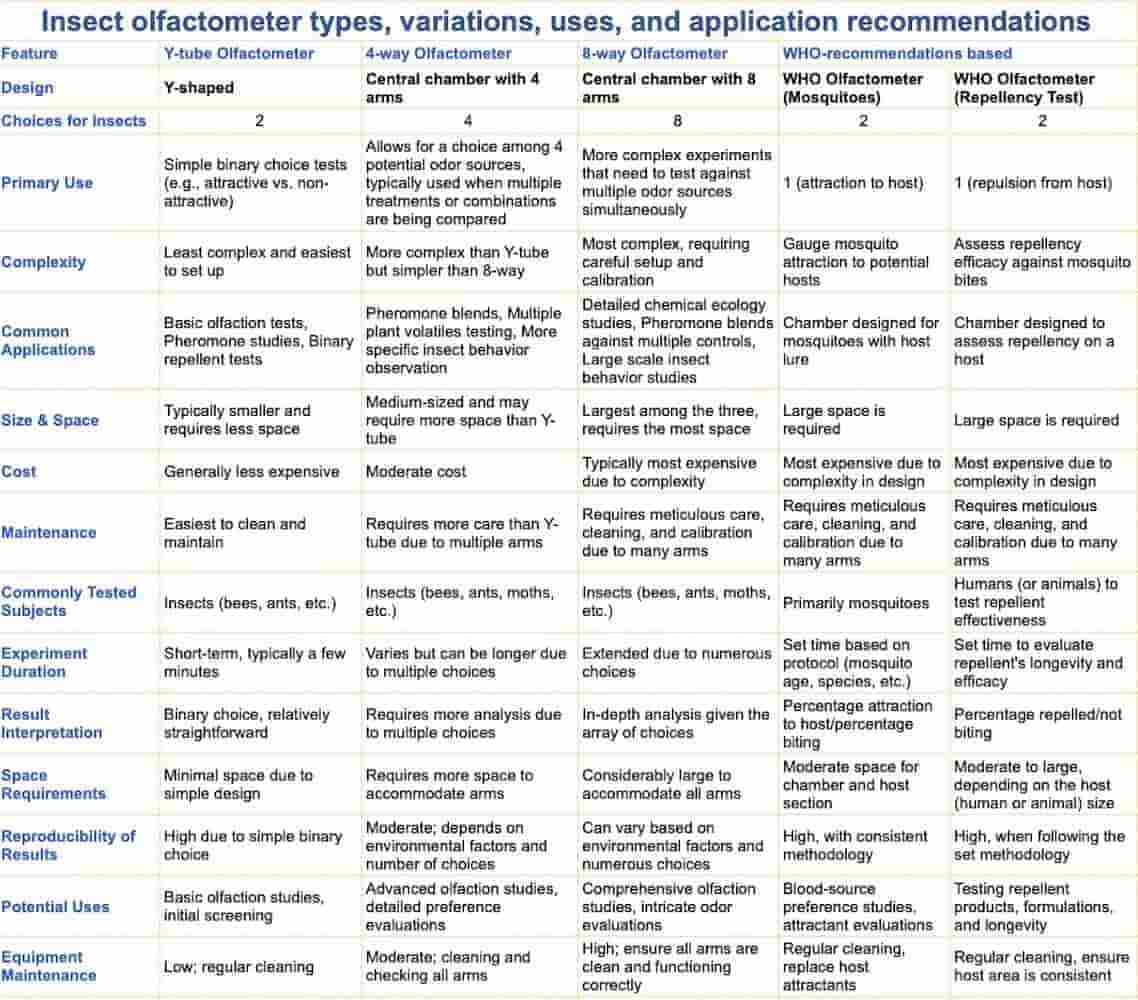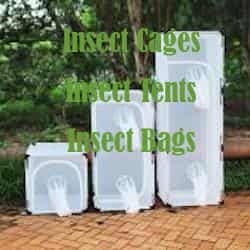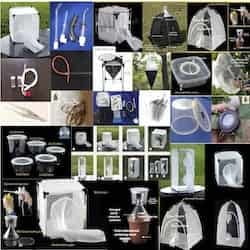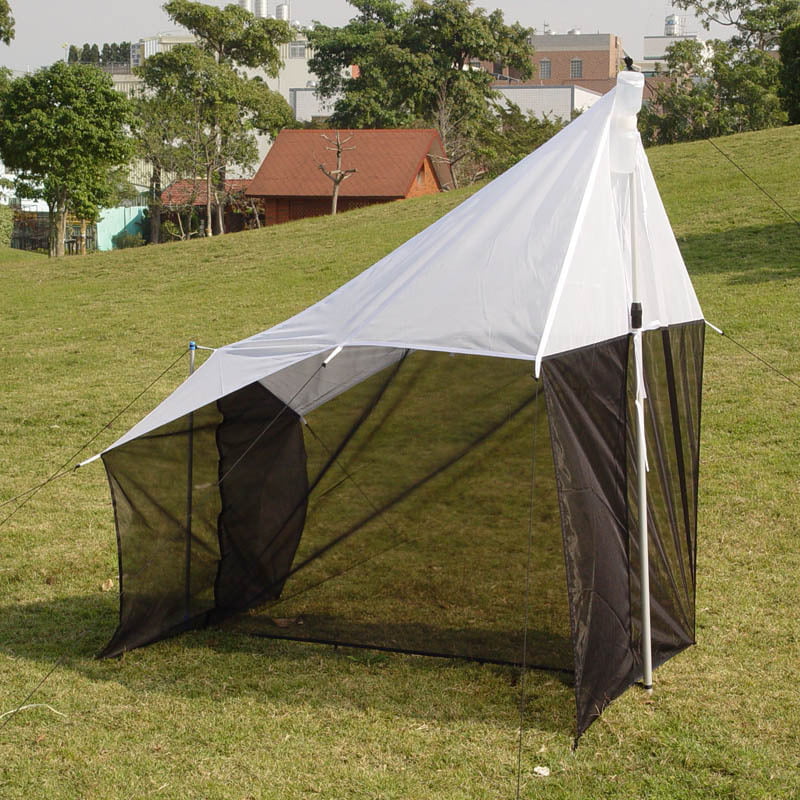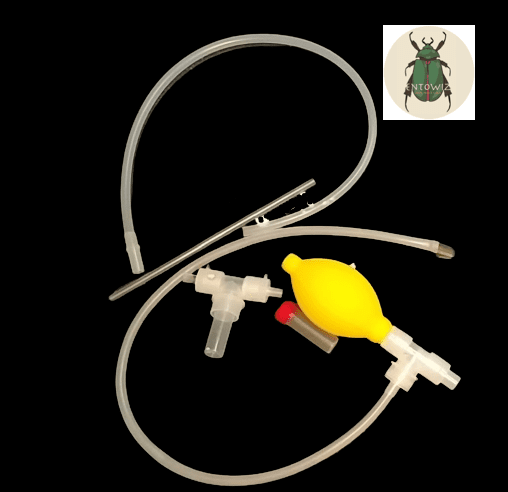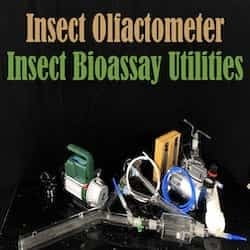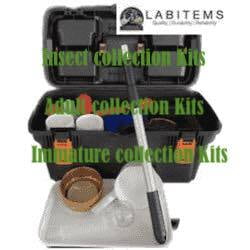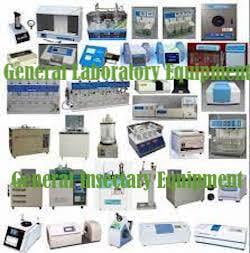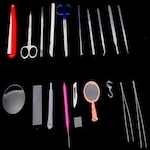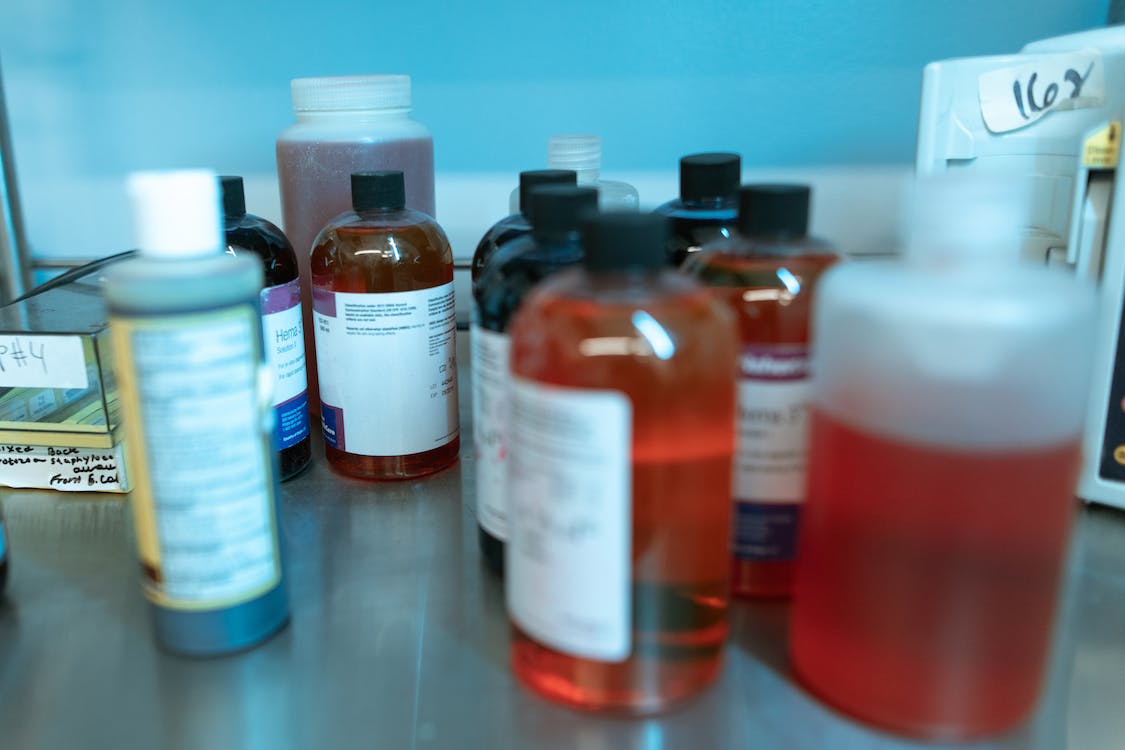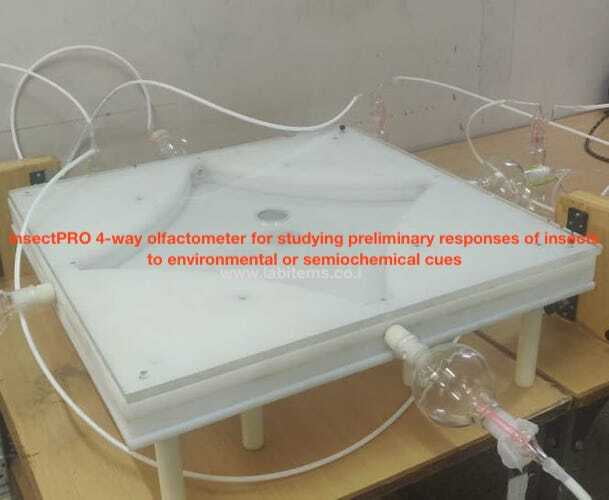
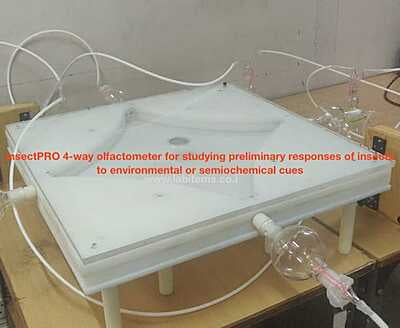

Olfactometer for entomology 4 choice chamber (2 x 2 foot and 40mm height chamber)
Dimensions:
Total width: 2 ft x 2 ft or 60 x 60 cm
Chamber height: 40mm
Recommendations. For small flying insects up to 10mm, also for actively crawling insects. The insects should able to cross 60cm distance in 2-3 minutes time.
Advantages: Could be able to convert the same unit into 3 way olfactometer
A 4-way insect olfactometer is a tool commonly used in entomology and chemical ecology research to study insect olfactory responses to various odor sources. The device allows researchers to assess insect preferences for certain odors, often helping in the study of pheromones, repellents, and attractants. Here's a more detailed overview of the 4-way insect olfactometer:
Design and Structure:
- The olfactometer typically consists of a central chamber from which four arms radiate outward. Each arm can introduce a different odor or air stream.
- The design allows insects to make a choice among the four potential odor sources.
- Transparent materials are often used for the construction, such as glass or clear plastic, enabling researchers to observe insect movement and choices.
Functionality:
- Insects are usually introduced into the central chamber and then make choices based on their attraction or repulsion to the odors introduced in the arms.
- Airflow is controlled to ensure that odors are directed from the arms into the central chamber, providing a gradient for the insects to detect and follow.
Applications:
- Pheromone Research: Studying the attraction of insects to pheromones, which are chemical signals used for communication among members of the same species.
- Repellent and Attractant Testing: Evaluating the efficacy of new repellents or attractants.
- Behavioral Studies: Observing how different insect species or stages (e.g., larvae vs. adults) respond to various odors.
- Chemical Ecology: Exploring the interactions between insects and their environment, particularly in response to plant volatiles.
Advantages:
- Multiple Choices: Provides a clearer picture of insect preferences compared to simpler two-choice systems.
- Controlled Environment: Offers a standardized setting for testing, which is essential for replicable results.
- Direct Observation: Allows for real-time monitoring of insect behavior.
Considerations:
- Standardization: Ensuring consistent airflow, odor concentrations, and environmental conditions is crucial for obtaining reliable results.
- Insect Handling: Care must be taken when introducing insects to minimize stress, which can influence their behavior.
- Odor Contamination: Regular cleaning and maintenance are required to prevent residual odors from affecting results.
The 4-way insect olfactometer is an invaluable tool in various research settings, especially when studying insect behavior related to olfaction. Proper setup, maintenance, and methodology are crucial to harness its full potential.
Usage Recommendations:
The use of an insect olfactometer comes with a set of recommendations to ensure accurate and reproducible results. Here's a set of best practices and recommendations when employing an insect olfactometer:
Pre-Experiment Preparations:
Calibration: Regularly calibrate the olfactometer to ensure consistent airflow and correct odor concentrations.
Cleaning: Before each experiment, clean the olfactometer thoroughly to remove any residue or contaminants. Avoid using strong chemicals that may leave lingering odors.
Environment: Maintain consistent environmental conditions (e.g., temperature, humidity) throughout the experiment.
Odor Delivery:
Consistency: Make sure the odor source is consistent in terms of concentration and presentation.
Airflow: Ensure a consistent and controlled airflow to deliver the odor from the source to the testing chamber.
Avoid Contamination: Use dedicated equipment (pipettes, vials) for each odor to prevent cross-contamination.
Handling Insects:
Stress Minimization: Handle insects gently to reduce stress, which could affect their olfactory responses.
Starvation: Depending on the study, it may be recommended to starve insects for a few hours before testing to heighten their olfactory sensitivity.
Experimental Design:
Replicates: Always run multiple replicates to ensure the reliability of the results.
Controls: Include control trials where only clean air is passed to check for any biases in insect movement.
Randomization: Vary the position of odor sources in multiple trials to negate any positional biases.
Data Collection and Analysis:
Observation: Keep detailed notes on insect behaviors, noting not just their final choice but also any hesitations or patterns in movement.
Statistical Analysis: Use appropriate statistical methods to analyze the data, ensuring any conclusions drawn are statistically significant.
Maintenance:
Regular Check: Regularly check all parts of the olfactometer for wear and tear, ensuring everything is in working order.
Replacement: Replace any parts as necessary, especially those that might influence odor delivery or insect behavior.
Storage: When not in use, store the olfactometer in a clean, dry place.
Safety:
Material Safety Data Sheets (MSDS): If working with potentially harmful compounds, always refer to the MSDS and use the required safety equipment.
Ventilation: Ensure that the laboratory or testing area is well-ventilated.
Documentation:
Protocol Standardization: Keep a standardized protocol for each experiment and note any deviations.
Updates: Regularly review and update methodologies based on the latest research and findings in the field.
Using an insect olfactometer effectively requires meticulous attention to detail and adherence to best practices. This ensures the results are not only accurate but also reproducible by other researchers.
